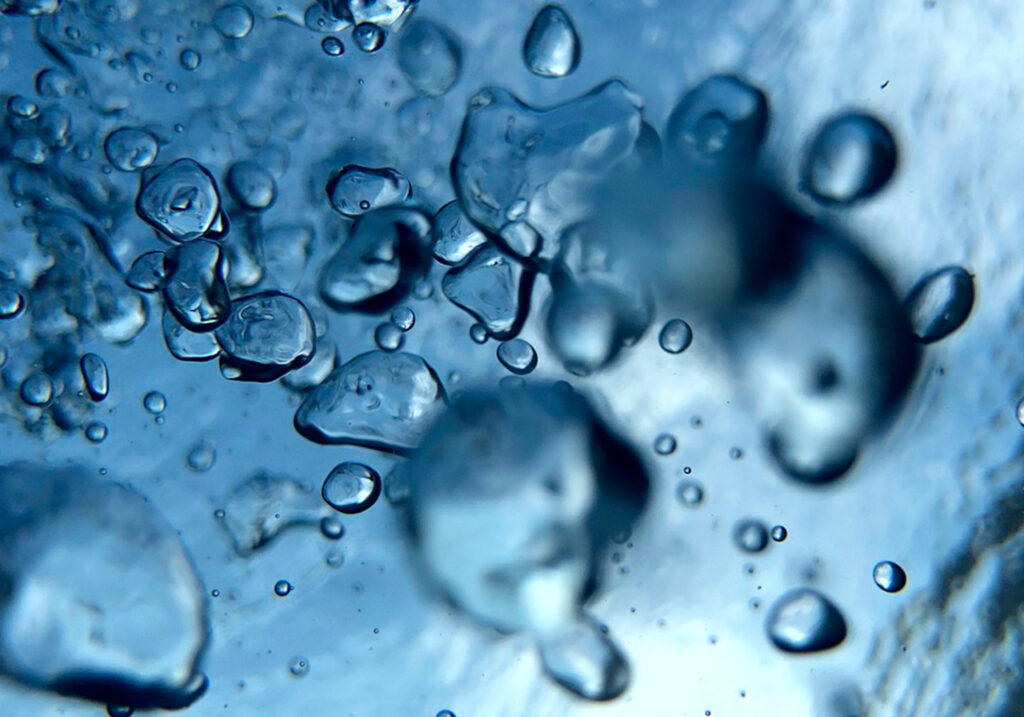A lot of people take it for granted, but a garage is an important part of a home. It offers storage space, shelter for vehicles, and even an area for hobbies or work.
However, one common issue homeowners face is water intrusion, which can lead to structural damage, mold growth, and ruined belongings.
Making your garage water-resistant is crucial to maintaining its functionality and longevity. In this guide, we will discuss practical steps to prevent water from entering your garage and protect your space from moisture damage.
Assessing Vulnerabilities in Your Garage
Before making your garage water-resistant, it is essential to identify the common areas where water intrusion occurs. Start by thoroughly inspecting the garage structure, including the walls, floors, and doors, for any cracks, gaps, or leaks. Check for visible signs of water damage, such as discoloration, mold growth, or soft spots on walls and ceilings. Pay particular attention to the roof, as missing shingles, worn-out flashing, or clogged gutters can lead to water seeping into the garage. Conducting a comprehensive assessment helps pinpoint areas that require immediate attention and long-term solutions.
The foundation is another critical area that can allow water to infiltrate the garage. Small foundation cracks may seem insignificant at first, but over time, they can widen due to changes in temperature and soil movement. Water entering through foundation cracks can lead to serious structural issues, including erosion and weakened concrete. If left unaddressed, this can compromise the garage’s stability and result in costly repairs. Additionally, inspect the junction where the garage floor meets the walls, as this is another common entry point for moisture.
Poor drainage is often a significant contributor to water problems in garages. Observe how water flows around your garage after a heavy rainstorm. If water pools around the foundation or near the entrance, it is a sign of inadequate drainage. Water accumulating near the garage can eventually seep inside, damaging stored belongings and leading to mold growth.
Sealing Cracks and Gaps
One of the most effective ways to waterproof your garage is by sealing all cracks and gaps that allow moisture to enter. Start with the foundation by using a high-quality concrete patch or epoxy filler to repair any cracks. These materials create a strong, waterproof bond that prevents further expansion of cracks and stops water from seeping through. Once the foundation is sealed, apply a waterproof sealant to the garage walls and floor to create an additional moisture barrier. This helps prevent water from soaking into porous surfaces and keeps the interior dry.
Garage doors are another potential weak point for water intrusion. Over time, weather stripping along the bottom and sides of the door can deteriorate, allowing rainwater to seep inside. Inspect the weather stripping regularly and replace it when it starts to show signs of wear or damage. Opt for high-quality, rubber-based weather stripping that forms a tight seal against the floor. If water still manages to enter under the garage door, consider installing a garage door threshold seal, which acts as a barrier to keep out water and debris.
Windows and side doors should also be properly sealed to prevent leaks. Check for any gaps around window frames and door edges, as even small openings can let in moisture. Use a silicone-based caulk or waterproof sealant to fill any gaps, ensuring a tight seal. If the garage has ventilation openings, consider using mesh covers that allow airflow while keeping out rain and debris. Proper sealing of all potential entry points ensures that your garage remains dry and protected from water damage.
Improving Garage Drainage
Proper drainage is key to keeping your garage dry and preventing water accumulation. If water frequently pools near the garage entrance, installing a trench drain or channel drain along the threshold can help redirect excess water away from the structure. These drains are designed to capture and channel water before it enters the garage, making them an effective solution for areas prone to heavy rainfall. Installing a sloped driveway can also help with water runoff, reducing the risk of water pooling near the entrance.
Gutters and downspouts play an essential role in managing rainwater around your garage. Ensure that your gutters are clean and free of debris, as clogged gutters can cause water to overflow and run down the garage walls. Downspouts should be positioned to direct water at least six feet away from the garage foundation to prevent soil erosion and water infiltration. If necessary, install downspout extensions or a rainwater collection system to improve drainage and reduce excess moisture near the garage.
For garages located in areas with heavy rainfall or sloped terrain, installing a French drain system can provide additional protection. A French drain consists of a perforated pipe buried in gravel, which collects and redirects water away from the garage. This is particularly useful for preventing water from seeping through the foundation or pooling around the base of the garage.
Waterproofing Garage Walls and Floors
Applying a waterproof coating to your garage walls and floors adds an extra layer of protection against moisture. Epoxy coatings and concrete sealers create a water-resistant barrier that prevents seepage and makes surfaces easier to clean. These coatings also enhance the durability of concrete floors, reducing the risk of cracks and wear over time. When applying an epoxy or sealant, ensure that the surface is clean and dry for maximum adhesion and effectiveness.
If your garage walls are exposed to high humidity, consider using waterproof paint or masonry sealers to prevent moisture absorption. Waterproof paint contains additives that repel water, making it an excellent choice for garages in humid climates. Masonry sealers penetrate porous surfaces, creating a long-lasting barrier against water infiltration. Additionally, applying a vapor barrier between drywall and insulation can prevent moisture buildup inside the walls, reducing the risk of mold and mildew growth.
In addition to coatings and sealants, installing water-resistant flooring materials can further enhance the garage’s ability to repel moisture. Rubber flooring, vinyl tiles, and sealed concrete floors are all excellent options that resist water damage and are easy to clean. Avoid using absorbent materials like untreated wood or carpet, as they can trap moisture and promote mold growth.
Installing Proper Ventilation
Proper ventilation is essential to reducing moisture buildup inside your garage. Poor airflow can lead to condensation, which increases the risk of mold growth and corrosion. Installing vents or exhaust fans can help regulate humidity levels and improve air circulation.
For garages without windows, mechanical ventilation systems, such as dehumidifiers or exhaust fans, can be beneficial. A dehumidifier helps maintain optimal humidity levels, preventing condensation from forming on walls and ceilings. If possible, leaving the garage door slightly open on dry, breezy days can also improve airflow and reduce trapped moisture.
Elevating Stored Items
If your garage is prone to occasional flooding or water intrusion, elevating stored items can prevent water damage. Use shelves, wall-mounted storage, or raised platforms to keep items off the ground. Avoid storing important documents, electronics, or fabric-based materials on the garage floor.
For additional protection, use waterproof storage bins instead of cardboard boxes. Cardboard absorbs moisture and deteriorates quickly in damp environments, while plastic bins offer better protection against water damage.
Installing a Proper Garage Door Threshold Seal
A garage door threshold seal is a raised strip that adheres to the floor and helps block water from entering under the door. It acts as an additional barrier against rain, leaves, and debris. Threshold seals are especially useful for garages located in areas that experience heavy rainfall or strong winds.
Choose a durable, heavy-duty rubber or vinyl threshold seal designed to withstand extreme weather conditions. Proper installation ensures a snug fit between the seal and the garage door, preventing leaks effectively.
Managing Snow and Ice Melt
For homeowners in colder climates, snow and ice melt can contribute to moisture problems in the garage. When vehicles covered in snow are parked inside, the melting snow can create puddles, leading to excess moisture and potential damage.
To manage this issue, place absorbent mats or trays under vehicles to catch melting snow. Regularly mop or sweep away any water accumulation to prevent standing moisture. Additionally, using a garage heater can help accelerate evaporation and maintain a dry environment during winter months.
Landscaping and Exterior Adjustments
The landscape surrounding your garage can impact water resistance. Ensure that the ground slopes away from the garage foundation to prevent water from pooling near the structure. If necessary, regrade the area or install a gravel border to improve drainage.
Using water-resistant materials, such as gravel or concrete pavers, around the garage entrance can help minimize standing water. Avoid planting trees or shrubs too close to the garage, as their root systems can affect drainage and potentially damage the foundation over time.
Regular Maintenance and Inspections
Preventative maintenance is key to keeping your garage water-resistant. Conduct regular inspections of your garage, especially before and after heavy rains or storms. Check for leaks, worn-out seals, and any signs of moisture buildup.
Cleaning your gutters, ensuring downspouts are functioning properly, and reapplying waterproof coatings as needed will help maintain a dry and durable garage. Addressing minor issues promptly prevents costly repairs in the future and ensures long-term water resistance.
Conclusion
Waterproofing your garage is a crucial investment that protects your property, belongings, and the structural integrity of the building. By sealing cracks, improving drainage, applying waterproof coatings, and maintaining proper ventilation, you can prevent water intrusion and create a durable, moisture-resistant space. Regular maintenance and proactive measures will keep your garage dry, functional, and protected from water damage for years to come.

